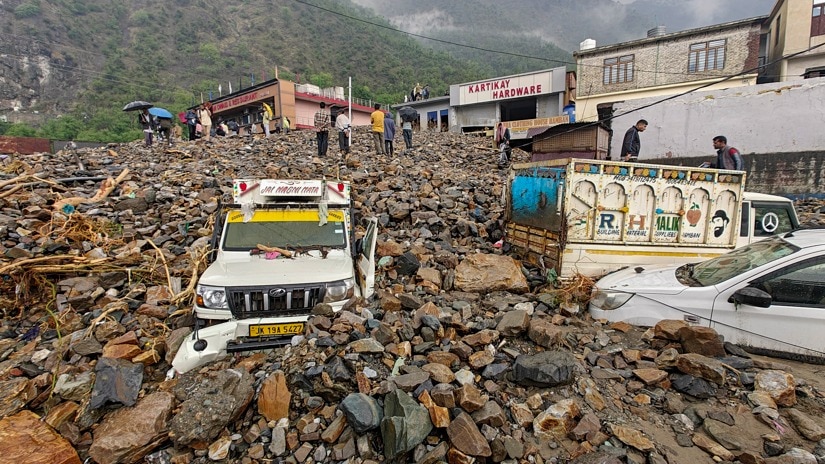Cloudburst Triggers Devastation in Ramban: Lives Lost, Hundreds Rescued, Infrastructure Crippled
Rambam 20 April 2025: Ramban district in Jammu and Kashmir was hit by an extreme weather calamity on Saturday as a sudden cloudburst and heavy rainfall wreaked havoc, leaving three dead, displacing hundreds, and bringing life to a standstill. The catastrophic event unleashed landslides, flash floods, and debris flows, blocking roads, demolishing buildings, and tossing vehicles into chaos. The Jammu-Srinagar National Highway (NH44)—a lifeline of connectivity—has been closed indefinitely, further complicating the rescue and relief efforts underway.
A Night of Chaos: What Happened in Ramban
The cloudburst struck Ramban with an overwhelming force, catching residents off guard as torrential rain flooded homes, swept away vehicles, and triggered large-scale landslides. Natural debris, including uprooted trees and massive rocks, blocked key roads, leaving many stranded.
- Fatalities and Displacement: Three lives were tragically lost, and over 100 people had to be rescued by emergency teams. Families were forced to abandon their homes, many of which were reduced to rubble.
- Property Damage: Buildings collapsed under the pressure of the floodwaters, while vehicles were tossed aside or buried beneath landslide debris.
Locals described the devastation as unprecedented: “We lost everything in one night,” said one distraught resident. For many, the scars left behind are both physical and emotional.
Disruption of Road and Air Travel
The cloudburst’s aftermath has left the Jammu-Srinagar National Highway (NH44) closed, cutting off Kashmir from the rest of the country. Landslides have rendered significant portions of the highway impassable, with debris blocking the movement of vehicles. Hundreds of commuters are stranded, waiting for rescue or alternative transportation options.
The disruption isn’t limited to roads—poor visibility and extreme weather conditions have also impacted air travel, with several flights canceled or delayed. This has created widespread logistical challenges for travelers and freight movement alike.
Rescue Operations: Hope Amidst Chaos
Despite the devastation, swift and coordinated efforts by rescue teams have saved many lives.
- State Disaster Response Force (SDRF): Teams were deployed to evacuate people stranded in the flood-affected zones.
- Army Intervention: The Army played a crucial role in relocating families to safer areas, providing food, water, and shelter.
- Local Heroes: Residents themselves organized small rescue operations, offering help to neighbors trapped in precarious conditions.
The administration has issued traffic advisories, urging residents to avoid travel along vulnerable routes and stay alert for further weather updates.
Environmental Impact: Ramban’s Fragile Ecology
The event has highlighted Ramban’s geological vulnerability. Nestled in the Himalayas, the district faces an elevated risk of flash floods and landslides, especially during periods of heavy rainfall.
- Changing Weather Patterns: Experts attribute the increasing frequency of cloudbursts in the region to climate change, which is intensifying weather extremes and destabilizing fragile ecosystems.
- Need for Infrastructure Resilience: Poorly planned infrastructure, combined with deforestation and soil erosion, exacerbates the impact of natural disasters.
A Call for Action: Addressing Vulnerabilities
This catastrophe underscores the urgent need for improved disaster preparedness in Jammu and Kashmir.
- Strengthening Infrastructure: Roads, bridges, and public buildings need to be reinforced to withstand extreme weather events.
- Early Warning Systems: Modern meteorological tools and sensors must be deployed to provide timely alerts.
- Community Preparedness: Disaster education and training for local residents can minimize loss of life during such events.
- Environmental Conservation: Afforestation and sustainable development initiatives are crucial to reduce ecological stress in fragile regions like Ramban.




